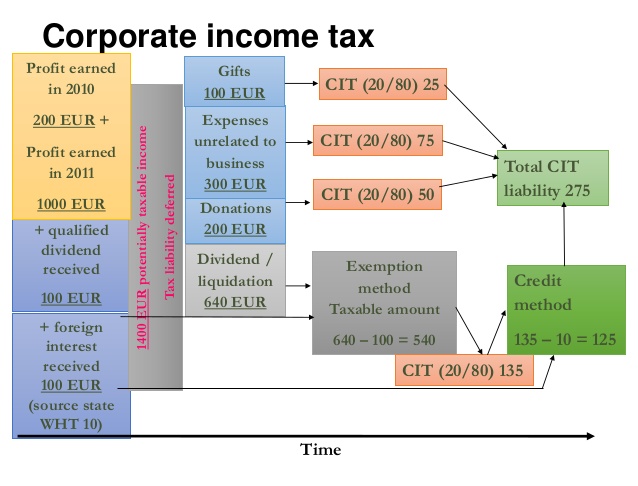Dezember 14, 2021
4 Steps to Find and Hire Developers for StartupReturn on Invested Capital ROIC: Definition & Formula

As a result, companies that carry high debt levels or repurchase shares frequently can have a tall ROE that inaccurately describes the profitability. You cannot use accounting-based performance measures such as the return on equity roic means to make reliable comparisons across businesses with different capital structures. A company’s ROIC is the ratio of its earnings before any interest expense on debt or taxes to the sum of its debt financing and equity financing.

He is a CFA charterholder as well as holding FINRA Series 7, 55 & 63 licenses. He currently researches and teaches economic sociology and the social studies of finance at the Hebrew University in Jerusalem. I’m happy to be able to spend my free time writing and explaining financial concepts to you. When a company uses debt, it pays interest to those who provide it with those resources.
Return on Invested Capital (ROIC) Definition
When a firm acquires a high ROIC due to a high NOPAT margin, the competitive analysis is based on the consumption advantage. Alternatively, if the returns are due to a high turnover ratio, then the company’s relative competitiveness is a result of a production advantage. There are some companies that run at zero returns, whose return percentage on the value of capital lies within the set estimation error, which in this case is 2%.
The denominator—equity value—is the difference between net assets and liabilities, which are registered at their market value (as opposed to their accounting value). A company creates value if its ROIC is higher than its weighted average cost of capital, or WACC. The NOPLAT (Net Operating Profit Less Adjusted Taxes) is the operating income after adjusting for taxes, as the name suggests. It excludes the impact of debt financing, allowing you to compare companies with different total capital structures. If the company announces a new $100 million project that will generate $10 million per year in profits, that should be a benefit to shareholders. After all, its cost of capital would be $8 million and its return $10 million, generating $2 million of value creation.
How Do You Compute ROIC?
However, in cases where a ROIC and WACC are close to each other, be careful, as there is less margin of safety. Suppose that a manufacturing company has a weighted average cost of capital of 8%. This means that, on average, it will need to earn more than 8% on new investments to generate positive shareholder value. Return on invested capital is a financial metric that investors use to analyze the profitability of a company’s existing investments and expansion opportunities. To do that, we can take its operating income of $25.942 billion and multiply by its effective tax rate of 25.44%.
Stock Picks: Morgan Stanley Shares 30 Stocks With Best Pricing … – Business Insider
Stock Picks: Morgan Stanley Shares 30 Stocks With Best Pricing ….
Posted: Thu, 15 Jun 2023 09:00:00 GMT [source]
Companies with high ROICs tend to earn premium valuation multiples from investors. A company with an above-average ROIC will usually also sport a high price-to-earnings and price-to-sales multiple. By adding back in interest expense, NOPAT neutralizes the effect of leverage.
Relevance and Use of Return on Invested Capital
Operating lease interest is then added back and income taxes subtracted to get NOPAT. Target’s invested capital includes shareholder equity, long-term debt, and operating lease liabilities. Target subtracts cash and cash equivalents from the sum of those figures to get its invested capital. Let us take the example of Apple Inc. to illustrate the concept of ROICE. NOPLAT (net operating profits less adjusted taxes) represents the profits earned by the company from its core operations. It is often computed by subtracting the relevant income tax on the income earned by the company to give a more accurate picture of a company’s revenue.
What is a good ROIC rate?
What is a good Return on Invested Capital benchmark? As a rule of thumb, ROIC should be greater than 2% in order to create value.
ROIC is much more useful in industries where companies buy lots of offices, warehouses, land, manufacturing facilities, equipment and so on. It will earn a very different ROIC reinvesting in a capital-heavy business such as its railroad or its renewable energy division as opposed to its chocolate or insurance businesses. An investor should consider the profitability of each major Berkshire subsidiary compared to rivals in its own industry rather than just using overall ROIC in isolation. ROIC can be very valuable in comparing one company against its competitors.
What ROIC Means to Your Business
Additionally, a non-recurring event generating a big gain or loss could affect profits and shouldn’t be used for evaluating normal operations of the business. Be sure to account for differences in balance sheets and anomalies in the income statements when comparing ROIC across companies. For most companies based in the U.S., the federal marginal tax rate is currently 21%.
- One common way to use ROIC as an investment decision-making tool is to compare the investment’s ROIC to its weighted average cost of capital (WACC).
- If the company produces a ROIC greater than its WACC, it’s creating value for shareholders.
- On the contrary, if a company has more to access funding than it can earn on new investments, the company will struggle to generate strong shareholder returns.
- Once you have NOPAT and invested capital figured out, it’s a simple division problem.
- In general, the higher both metrics are, the better the company is at finding profitable investment opportunities.
- The ROIC of a company can be compared with its weighted average cost of capital (WACC), and a higher value of ROIC than WACC indicates value creation, while a lower value means value destruction.
Starting from Year 1 to Year 5, we can see an increase from 11.2% to 15.0%, which is caused by the increased profit margins and the increase in operating current liabilities. Once the entire forecast has been filled, we can calculate the ROIC in each period by dividing NOPAT by the average between the current and prior period invested capital balance. Hence, current earnings and cash flows are a relatively small component of the total net return — instead, the ability to reinvest those earnings to build real value is much more important. If a company generated $10 million in profits and invested an average of $100 million in each of the past two years, the ROIC is equal to 10%. He is also the author of a number of books on valuation, corporate finance, and investments.
How does ROIC impact valuation?
ROIC and Equity Valuation
All else equal, a company with a higher ROIC will tend to trade at a higher price-to-book ratio. Equity investors realize that a highly economically profitable company is worth more than the book value of capital that has been invested into it.